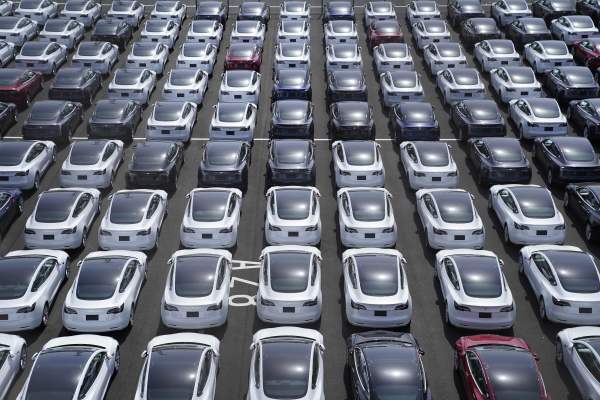ARTICLE AD

Elon Musk’s decision to green light a robotaxi over an affordable EV might cost the company its lead.
Last week, Musk reportedly canned the effort in favor of a robotaxi, the sort of pie-in-the-sky project that defined his first decade at the helm. There’s an argument to be made that the company is where it is today by betting big, then delivering on enough of its promises to impress shareholders and generate significant positive cashflow. Problem is, in the early days, there was both everything and nothing to lose. The whole company could have gone under, but there was also less on the line.
Today, Tesla is no longer the plucky upstart. It brought in nearly $100 billion in revenue last year and earned net profits of $15 billion, the sort that would have other automakers rewarding shareholders with richer dividends. It’s a global manufacturer that cranks out hundreds of thousands of cars every quarter, the type of operation where success is measured in continuous improvement in productivity and process indicators.
Tesla was reportedly on the cusp of building a $25,000 EV. In January, Musk confirmed that the company would begin construction of a next-generation vehicle at its Texas plant in the second half of 2025. Suppliers had been asked to bid on parts contracts, Reuters reported, with weekly production volume starting at 10,000 vehicles per week. Given flagging sales of the company’s existing product line, it would have been a welcome shot in the arm.
An inexpensive EV would have significantly increased Tesla’s total addressable market by dramatically undercutting the average sales price in the U.S., which is currently at around $47,000. It also would have given the company a product to hold its ground against a predicted onslaught of inexpensive Chinese EVs.
But it also would have meant creating a production line from scratch, something the company last did at scale with the Model 3. By all accounts, that wasn’t a fun experience.
Building a robotaxi, though. Now that sounds like fun.
Musk has long been enamored with the concept. Four years ago, he said that such a car would be able to earn its owner up to $30,000 per year as it ferried paying passengers to and fro. It would be so popular, Musk reportedly told biographer Walter Isaacson, that “there is no amount that we could possibly build that will be enough.”
Problem is, Tesla has been trying to master autonomous hardware and software for a while now, and it doesn’t appear anywhere close to delivering a vehicle capable of Level 5 driving, which would require zero human input. Despite years of work, Autopilot remains a Level 2 system, which means it requires human attention at all times. The same is true for Full Self-Driving. (Indeed, the company recently started using the term “supervised” when referring to the software suite.) And while artificial intelligence has been advancing rapidly of late, is it moving quickly enough to provide Tesla with a blockbuster product in the next few years?
Given Musk’s desire to pursue exploratory projects, the logical path would be to spin up a skunkworks inside Tesla or spin out a division that’s purely focused on bringing a robotaxi to market. The latter is unlikely to happen because much of Musk’s wealth is tied up in Tesla stock, and he probably doesn’t trust anyone else to run the company when that much money is on the line. The former has more of a chance, but Musk also likes to appear heavily involved in, well, everything at Tesla. He’d balk at the idea of “only” running a skunkworks.
It’s something that Tesla’s board should probably be weighing in on. And maybe they are. But numerous reports have also illustrated just how tightly linked that board is with Musk. They don’t appear to disagree on much, and that could cost Tesla its lead.

 9 months ago
52
9 months ago
52 

